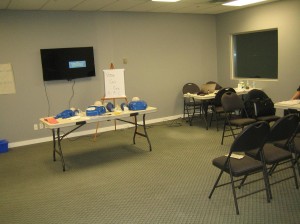Over the recent years, the trainees who have enrolled in our programs have been people who work or are interested in healthcare, particularly allied health professionals and students. With the advent of the internet and awareness campaigns regarding cardiovascular diseases and how important it is to learn CPR, even laypersons have started flocking to our provider, Portland with CPR Course in Oregon.
Cardiac arrest in children vs. cardiac arrest in adults
When CPR is given to adults, its pretty basic – chest compressions will usually do if the rescuer doesn’t know how to give rescue breaths. This is because of hypoxia of the tissues (lack of oxygen) in adults is not due to a decreased level of oxygen in the blood, it is due to poor circulation. This is not the case with children.
When cardiac arrest happens in an adult, it is commonly due to an underlying cardiovascular problem. In children, cardiac arrest is commonly preceeded by respiratory failure, stemming from debilitating respiratory status. Because of this, both poor circulation and hypoxemia (decreased oxygen content in the blood) contribute to tissue hypoxia in children.
Cardiovascular resuscitation
Because cardiac arrest in adults is different in children, the principles that fuel cardiopulmonary resuscitation also differ. For adults, chest compressions can be used alone when giving CPR. In children, both compression and ventilation are very important. Rescue breaths are then emphasized in pediatric life support.
There are three basic skills that every rescuer must know:
- Compression – Compressions are given at a rate of at least 100 per minute, with a ratio of 30 compressions to 2 rescue breaths. The chest has to be depressed by at least 2 inches for adults and toddlers and 1.5 inches for infants.
- Ventilation – Ventilation (rescue breaths) are given by tilting the head back and thrusting the jaw down to open the mouth. They are given after 30 compressions.
- Defibrillation – Defibrillation is done with Automated External Defibrillators (AEDs). These machines are attached to the chest with pads and send electrical shock to the heart. They are used when the victim is experiencing arrhythmias or irregular heart rhythm. They are not used when the victim is in asystole (flatline).
Available CPR programs

We have five training programs at Portland CPR, offered all week. Re-certification is available for three of the training programs as well. Because our programs are certification courses, all students receive CPR training credentials upon completion. These credentials are only valid for 2 years then they expire. Re-certification classes can be enrolled in to renew them, but only rescuers with valid certificates can enroll.
The first three programs are Basic Life Support while the last two are Advanced Life Support programs.
- Heartsaver CPR – general public (4 hrs)
- Heartsaver CPR C – HCPs (4.5 hrs)
- Basic Life Support for HCPs (4.5 hrs)*
- Advanced Cardiac Life Support – HCPs (16 hrs)*
- Pediatric Advanced Life Support – HCPs (4 hrs)*
*These programs have accompanying re-certification classes for the renewal of CPR training credentials.
